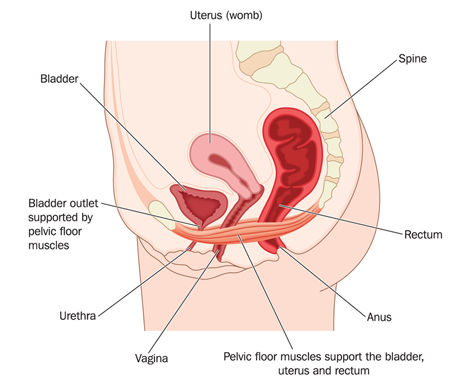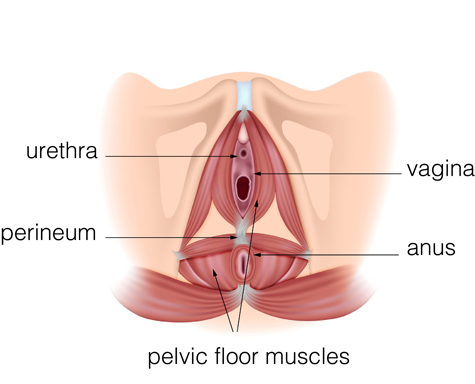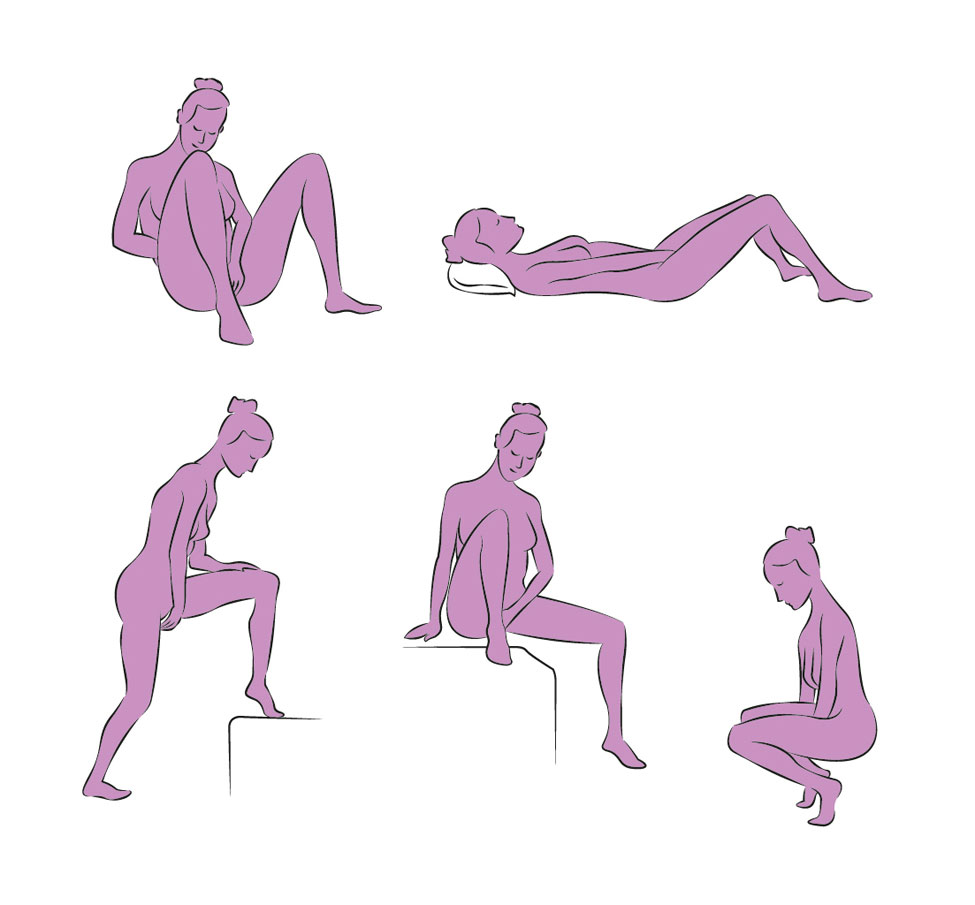If you or someone you know is suffering from vaginal pain, or are undergoing post-surgery therapy, pelvic floor muscle exercises and dilation exercises may be useful to you. Any exercises should only be done after consultation with your health care provider. Whilst the series of FUZE+ dilators are not registered as a medical device, the gentle shape and flexible silicone make them often preferred by people performing pelvic floor muscle exercises.
Anything thought of as medical can be intimidating. Even the language used can be difficult to comprehend sometimes. Don’t worry, you are not alone. There is absolutely no reason to feel scared. The first step to solving any problem is to understand it, and the more you know, the more power you take back for yourself.
To help you along the way, we have adapted an informational guide, originally created by Come As You Are, with much help from Stephanie Thibault-Gagnon PT, BSC (PT) and Evelyne Gentilcore-Saulnier PT, BSc (PT), MSc.. Any information contained in this guide is not meant to be used as medical advice and is not an alternative to talking with your gynaecologist, doctor or other medical specialist. The best place to learn more about your individual situation is of course from your health professional. If you feel like you may need extra help or support, please feel free to look at the sites in our resources section.
Vaginal dilation exercises may be used by people experiencing genital pain (for example vaginismus), people who have received radiation treatment for gynecological cancer, or people who have had vaginal construction surgery.
Vaginismus is the medical term for an uncontrolled flinch or spasm of the muscles surrounding the opening to the vagina. The muscles in this general area are collectively named the pelvic floor muscles. The opening to the vagina becomes tighter as the muscles contract and any form of penetration might become difficult, or painful. Vaginismus is just a result of the movement of the muscles, not a physical abnormality.
Each case is unique, and the exact cause may be difficult to determine, which is why it is always best to consult a specialist, but there is often an emotional link with vaginismus. The trigger could sometimes be pain or the anticipation of pain, fear, anxiety, distress or confusion. There is no need to feel self-conscious, vaginismus is just as natural as tensing your muscles when you expect an injection to hurt.
Painful intercourse could have a variety of causes.
The vaginal opening might be particularly sensitive to touch, resulting in pain, but no visible symptoms. This is known as vulvar vestibular syndrome.
Constant pain, not necessarily associated with intercourse, could be vulvodynia.
There may be an underlying medical problem, which is why it is so very important to have good communication with your health professional. If you feel uncomfortable discussing your situation with them, you may want to find health care provider that is easier to talk to.
Dilation exercises involve the insertion of dilators of progressively larger sizes into your vagina whilst your pelvic floor muscles are relaxed. A primary goal of vaginal dilation exercises is to increase comfort with vaginal penetration. Combined with mental relaxation exercises, dilation exercises may reduce anxiety and the anticipation of painful penetration. Pelvic floor muscles may be trained to relax, gradually increasing the elasticity of the vaginal opening and helping to reduce pain.
Dilation exercises are performed alongside pelvic floor contractions and relaxations. Before starting your dilation exercise routine, you should identify your pelvic floor muscles and learn how they contract and relax. Once you retrain these muscles for greater control you will be able to perform your dilation exercises more efficiently.
As the name suggests, the pelvic floor muscles span between the bones of the pelvis, forming the floor of the abdominal cavity. Pelvic floor muscles may also be known as Kegel muscles or pobococcygeus (P.C.) muscles. These muscles support your internal organs just like a hammock, and control the openings at the anus, the reproductive system and the urinary tract. Pelvic floor muscles respond to the conscious mind, to stimuli from the internal organs (for example a full bladder), and to involuntary signals below the conscious level (such as the muscular flinch that causes vaginismus). Good muscle tone and control of the pelvic floor muscles are important for many aspects of health, not only intercourse.


There is a simple way to find your own pelvic floor muscles. When you urinate, sit on the toilet with your legs wide apart. Begin to urinate normally, and without moving your legs, attempt to slow or stop and then restart the flow of urine. In this position, the only way to do this is by contracting the muscles around the urethral opening. Once you have successfully controlled the flow of urine, you have identified what it feels like to consciously control your pelvic floor muscles. It is perfectly normal if you do not completely stop the flow of urine, since your muscles are untrained at this stage. Only use this exercise to identify the muscle groups. Do not repeat it often, as it may interfere with normal bladder emptying.
Another way to identify the Pelvic Floor muscles would be to use a mirror to look at your vagina and anus so you can see the area tighten when you contract the muscles and loosen when you relax. Alternatively, you could place a finger on the muscles surrounding the anus, so you can feel their contraction and relaxation when you attempt conscious control.
Now you know how to focus on your pelvic floor muscles you are ready to perform your contraction and relaxation exercises anywhere and at any time, and no one will be able to tell! It may be challenging to perform the contractions at the beginning, but over time they will become easier and more comfortable.
You may perform the contractions and relaxations whilst sitting, lying on your back or your stomach, with your legs bent or straight, whichever works best for you. Many people like to lie on their backs with their knees bent whilst performing their exercises, a position they may wish to continue and repeat during penetrative activities.
When you have found the most comfortable position for yourself, relax the muscles of your thighs, buttocks and abdomen. You can use the skills you have already learned when you identified and isolated your Pelvic Floor Muscles. Try not to squeeze your buttocks or thighs, to better focus on your pelvic floor muscles. Tighten and squeeze the ring of muscle around your urethra and anus. This should feel like trying to hold the flow of urine. Hold the muscle contraction for two seconds, then release and relax the same muscles completely for four seconds.
day and establish an ongoing regime. The same muscle group that spans the pelvic floor surrounds your urethra, vagina, anus, and controls the vaginal opening.
Some people choose different rhythms for their pelvic floor contraction and relaxation exercises. They may start with the two second contraction followed by a four second relaxation, then change to contracting and releasing the muscles as quickly as possible, and finally doing the same sequence in slow motion.
You may want to practice these exercises for several weeks before moving to dilation exercises. This is not about recommending one routine that is perfect for everyone, rather about setting the pace and progress that is perfect for you.
First, you identified and isolated your pelvic floor muscles. Next, you performed contraction and relaxation exercises using those pelvic floor muscles. Once you are satisfied with your muscular control you may begin the dilation exercises, alongside some mental relaxation exercises if you wish. We suggest that you set aside at least thirty uninterrupted minutes in a safe, secure and relaxed environment.
Start in a comfortable position. You may like to be half sitting, with your back and head supported by pillows. Bend your knees and relax your hips by letting your knees fall out to the side. Perform two sets of ten pelvic floor contractions with two second holds, and focus on completely relaxing your pelvic floor muscles at the end of each contraction for at least four seconds. You might like to get used to the dilator by resting it on your pubic mound or moving it near your vaginal opening whilst you perform these contractions.

After performing twenty contractions, lubricate the vaginal opening and generously apply lubricant to the dilator, so that it is fully covered from top to bottom. Take slow and calming, deep, even breaths and gently insert the tip of the dilator. You may wish to use a mirror to help guide you. If you feel pain or discomfort during insertion, do not try to force it. Hold the dilator still and perform pelvic floor contractions and relaxations. Really concentrate on the relaxation part of the sequence to completely relax your pelvic floor muscles. In many women, this focusing on relaxation lowers the sensation of pain as it relaxes the muscles around the vaginal opening. With less muscular constriction there is less friction during insertion. Allow the pain to subside, then you may continue to contract and relax followed by further inserting the dilator.
Some people can insert the dilator fully on the first attempt, some people can only insert the dilator a short way, and some cannot initially insert it at all. Do not worry, everyone is different and you should only do what feels right to you. You might like to repeat the sets of pelvic floor contractions and relaxations, and then see if it is easier to insert the dilator a bit more once the muscles are completely relaxed. It may take several series of contraction- relaxation- insertion before you are able to insert the dilator as far as is comfortable. Some days may feel easier than others, so there is no need to feel rushed or to feel any pressure to progress quickly.
Once the dilator has been inserted as far into the vagina as feels comfortable, hold it in place for a couple of minutes. All the while, try to maintain focus on relaxing your pelvic floor muscles. You might also then want to experiment by gently squeezing and releasing your pelvic floor muscles a few times, just to see how it feels.
You may use a similar sequence to remove the dilator. Perform a set or pelvic floor contractions and relaxations and when the muscles are fully relaxed, slowly remove a portion of the dilator. Continue repeating the routine until you have fully removed the dilator. You may need fewer sets of repetitions to remove the dilator than during insertion.
Well done, you have completed one insertion. In each session, you might like to repeat the process only a couple of times, or anything up to ten times.
You will notice a difference in muscle tone and control, and just like any other exercise, the more you repeat the movements, the more natural they become. It may take some time just performing contraction and relaxation exercises to train the pelvic floor muscles before you are ready for the dilation exercises.
Many people aim to perform their dilation exercises every other day. The exact routine is not too important, whatever fits your life the best, but three or four times a week is a very reasonable amount.
The first time you use a dilator, you may only feel comfortable with two or three insertions for a minute or less at a time. This is to be expected. If you feel too much pain or discomfort, it is best not to continue, but to stop and try again later. You will gradually be able to build up to ten insertions of two to three minutes a time.
These exercises are designed to be progressive, starting with the smallest dilator, Step 1. When you feel ready, you may progress to the slightly wider Step 2. Repeat the same exercises until you are prepared for Step 3, and so on to Step 4 and Step 5.
It is best not to skip a Step, even if you feel you might be able to. You may not need to spend the same amount of time with each dilator, but your progress will be better if you perform all the steps in order. For example, you may rapidly progress from Step 1 to Step 2, take much longer before you are ready for Step 3, but then move on to Step 4 quickly. Do not judge yourself against anyone else, since everyone progresses differently. The best rate is the one that you are most happy with. It is important to take your time and pay attention to your own body as you move through the steps. Notice when you do, or do not, feel pain, and any differences you may feel within yourself.
You may prefer not to do your exercises alone. Involving your partner with these exercises can help to build trust, understanding of your condition, and create an even stronger emotional bond. However, good communication is vitally important when two people are involved. Remember, you are in complete control and your partner should always follow your lead. Although this will feel very intimate, you may or may not experience sexual arousal. Either is perfectly okay, as sexual arousal is not necessarily a primary goal at this stage.
Keep talking to each other with openness, honesty and sensitivity. Gentle body contact may help to relax you both. Instruct your partner on how to perform the insertions, when, how fast and how far to insert the dilator. It may help your partner to understand if you demonstrate the first insertion and then guide their hand once you are both ready. If it does not feel right, give your partner feedback straight away so they can adjust the movement or stop immediately. Whilst you are working together as a team, you should always feel comfortable and in control with no pressure and without feeling rushed.
When you are doing the exercises with your partner, you might like to position yourself at the edge of a bed or table, lying back supported by pillows with your knees bent. This should be comfortable for the two of you, and allow the dilator to be easily moved.
Fuze+ dilators are produced from 100% medical grade silicone, so couldn’t be easier to look after. Once you have completed your exercises, simply clean with soap and warm water. Please make sure to rinse well, as some people are sensitive to soap residue. The dilator may be air dried and stored wrapped in a clean towel or placed in a ziplock bag.
As silicone is unaffected by higher temperatures, it is safe to clean in a dishwasher if you like, boil, or even autoclave, to ensure they are fully sanitized. Please ensure that they do not boil dry as extreme temperatures, above 200 degrees Centigrade, can affect the silicone.
You will find your exercises easier, your experiences more pleasant and more comfortable if you are both physically and mentally relaxed.
Each person’s background is unique, and there is often an emotional link to the body’s reflexes. Mental relaxation exercises may be equally as important as the physical exercises. It can be beneficial to identify and dispel any negative emotions associated with sexual practices. This is often easier with support, and you might like to talk with somebody who can help you.
It is best to practice your exercises where you feel safe, relaxed and comfortable. You might find a warm bath relaxes you and makes your skin softer and more pliable. Some people find it easiest to insert the dilator whilst relaxed lying on a bed with their knees bent. Others may prefer to be standing with one leg propped on a chair.
You should not develop muscular pain in your buttocks, thighs, back or abdomen whilst performing pelvic floor contractions. This may be a sign that you have been performing the contractions too strenuously.
It is very common that the body does not produce enough natural lubricant when you are exercising with dilators. The use of lubricant is very important. We suggest organic, water based lubricants with relatively few ingredients. Some people find they react to glycerin or propylene glycol, which are sometimes found in commercial personal lubricants. Many drug stores carry a wide range of personal lubricants, or your favourite sex shop would be able to make an excellent recommendation.
Others might prefer an oil based lube and have had great success with something even as simple and natural as coconut oil. Coconut oil is also wonderful for softening your skin. However, this may not be the best choice if you also happen to be trying to conceive.
We do not recommend silicone based lubes. They are excellent for other uses, but may damage even the highest quality, medical grade silicone used for our dilators.

